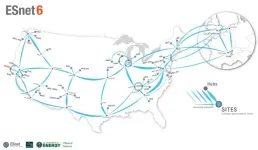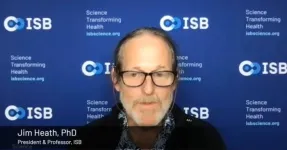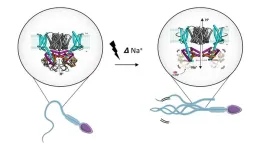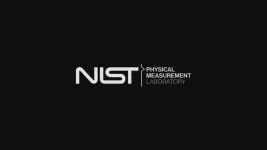(Press-News.org) Inspired by the remarkable durability of ancient Roman construction materials in seawater, a University of Texas at Arlington civil engineering researcher is attempting to duplicate Roman concrete by developing 3D-printed materials to restore damaged or dying coral reefs.
Warda Ashraf, associate professor in the Department of Civil Engineering, will lead a multidisciplinary team, funded by a $2 million National Science Foundation (NSF) grant, that aims to build 3D-printed artificial reefs. The team’s project is titled “Carbon Sequestration and Coastal Resilience Through 3D Printed Reefs” and is part of the NSF’s Emerging Frontiers in Research and Innovation program.
“In the past few decades, artificial reefs made from concrete, old tires and old ships were used. But those just don’t work well because seawater disintegrates those materials, and many of them cause additional environmental pollution,” Ashraf said. “We can replicate Roman concrete, which lasts longer and is better for the environment.
“We will modify the concrete recipe to store carbon and offer a novel pathway to permanently sequester thousand tons of carbon under the ocean in addition to providing coastal resilience and supporting marine habitat.”
Ashraf said the team already has installed small cylinders and cubes of the recreated Roman concrete in Baffin Bay, just south of Corpus Christi, in the Gulf of Mexico. Marine organisms love it, she said.
“We’ve already done some testing there,” Ashraf said. “Barnacles that have attached themselves to the new reef really grab hold of it. The materials also got 40% to 50% stronger in seawater within five months.”
The project is critical because climate change has already damaged nearly 40% of the reefs and their dependent ecosystems, according to the National Oceanic and Atmospheric Administration Fisheries and The World Counts. Some experts anticipate coral reefs to be extinct by the end of this century. Coral reefs play a vital role in separating carbon dioxide from the atmosphere and in protecting coastal areas from extreme events, such as hurricanes and flooding.
Ashraf is the principal investigator on the multi-disciplinary team, which also includes Laura Mydlarz, UT Arlington biology professor, and Adnan Rajib, UT Arlington civil engineering assistant professor.
Mydlarz is an expert on coral reefs and will study if the artificial reef material can co-exist with natural reefs and how new coral reacts and grows with the artificial reef. Rajib’s expertise is in nature-based climate solutions. He will develop a coastal hydrodynamic model to determine the size of the artificial reefs and how they will reduce sea level rise and coastal flood impacts. Researchers from the University of Texas at Dallas and Texas A&M University-College Station also will participate in the project.
Ashraf previously has received two Defense Advanced Research Projects Agency (DARPA) awards totaling about $740,000 to work on durable marine concrete. In 2020, she received a DARPA Young Faculty Award that supported the development of a cementitious material mimicking Roman concrete. She also received the DARPA Directors Award in 2022 for testing the performance of those materials in a field environment.
Melanie Sattler, chair and Dr. Syed Qasim Professor in the Department of Civil Engineering, said Ashraf’s work is an exceptional example of reaching across the campus for a project that could save natural resources.
“Her work is astounding,” Sattler said. “This artificial reef holds so much promise for the entire world.”
END
A bold plan to 3D print artificial coral reef
UTA team is 3D printing material that mimics ancient Roman concrete to restore coral reefs
2023-10-25
ELSE PRESS RELEASES FROM THIS DATE:
ESnet turns on 400G circuits to four DOE national labs, supercharging multi-site scientific research
2023-10-25
– By Bonnie Powell
Today’s world-changing scientific research is being conducted by collaborators at far-flung national laboratories who require high-speed, low-latency access to high performance computing facilities and specialized instruments. The Energy Sciences Network (ESnet) is proud to announce that it has supercharged the current and future bandwidth for four of the Department of Energy’s (DOE’s) national laboratories and user facilities, unleashing 400 Gigabit per second (400G) capability for Argonne National Laboratory, ...
MD Anderson Research Highlights for October 25, 2023
2023-10-25
HOUSTON ― The University of Texas MD Anderson Cancer Center’s Research Highlights showcases the latest breakthroughs in cancer care, research and prevention. These advances are made possible through seamless collaboration between MD Anderson’s world-leading clinicians and scientists, bringing discoveries from the lab to the clinic and back.
Recent developments at MD Anderson include positive results from a Phase I trial for patients with TP53-mutant acute myeloid leukemia, a novel machine learning ...
Can AI grasp related concepts after learning only one?
2023-10-25
Humans have the ability to learn a new concept and then immediately use it to understand related uses of that concept—once children know how to “skip,” they understand what it means to “skip twice around the room” or “skip with your hands up.”
But are machines capable of this type of thinking? In the late 1980s, Jerry Fodor and Zenon Pylyshyn, philosophers and cognitive scientists, posited that artificial neural networks—the engines that drive artificial intelligence and machine learning— are not capable of making these connections, known as “compositional generalizations.” However, in the decades ...
Breakthrough T cell discovery has huge potential for engineering custom immune responses
2023-10-25
SEATTLE – T cells are soldiers on the front lines of the human immune system. They are responsible for many important roles, including attacking viral- or bacterial-infected cells and certain cancer cells, and immunological memory – remembering the specific pathogens or the cancer signatures that originally trigger T cells.
Until now, understanding how a T cell forms into a specific role, for example a cell-killing (cytotoxic) T cell or memory T cell, has eluded us. In a paper that will be published online by Cell Reports on October 25, ISB researchers made the breakthrough ...
Sperm's secret voltage switch: Scientists unlock the mystery of motility
2023-10-25
Researchers at Stockholm University have unveiled the hidden intricacies of how sperm go from passive bystanders to dynamic swimmers. This transformation is a pivotal step in the journey to fertilization, and it hinges on the activation of a unique ion transporter.
Imagine sperm as tiny adventurers on a quest to reach the ultimate treasure, the egg. They don't have a map, but they make use of something even more extraordinary: chemo-attractants. These are chemical signals released by the egg that act as siren call, directing and activating the sperm. When these signals bind to receptors on the sperm's surface, it triggers a series of events, starting their movement towards ...
Simple blood test can help diagnose bipolar disorder
2023-10-25
Researchers have developed a new way of improving diagnosis of bipolar disorder that uses a simple blood test to identify biomarkers associated with the condition.
The researchers, from the University of Cambridge, used a combination of an online psychiatric assessment and a blood test to diagnose patients with bipolar disorder, many of whom had been misdiagnosed with major depressive disorder.
The researchers say the blood test on its own could diagnose up to 30% of patients with bipolar disorder, but that it is even more effective when combined with a digital mental health assessment.
Incorporating biomarker ...
New study identifies illegal hunting as a threat to China’s wildlife and global public health
2023-10-25
Illegal hunting and trading of wildlife in China is becoming a significant threat to biodiversity and public health, according to a new paper by a team of researchers that includes two scholars from the School of Public and International Affairs. It is the first comprehensive assessment of this issue for China.
The paper, "Assessing the illegal hunting of native wildlife in China," appears in Nature today. Its co-authors are Dan Liang, Xingli Giam, Sifan Hu, Liang Ma, and David S. Wilcove. Liang is an associate research scholar at SPIA's Center for Policy Research on Energy and the ...
Age, body mass index, tumor subtype, and racial and ethnic disparities in breast cancer survival
2023-10-25
About The Study: In this study with 9,479 participants, racial and ethnic survival disparities were identified in patients with early-stage breast cancer receiving standardized initial care, and potentially at-risk subgroups, for whom focused interventions may improve outcomes, were found.
Authors: Erica T. Warner, Sc.D., of Massachusetts General Hospital in Boston, is the corresponding author.
To access the embargoed study: Visit our For The Media website at this link https://media.jamanetwork.com/
(doi:10.1001/jamanetworkopen.2023.39584
Editor’s Note: Please see the article for additional ...
Metformin cessation and dementia incidence
2023-10-25
About The Study: Terminating metformin treatment was associated with increased dementia incidence in this study of 12,000 early terminators and 29,000 routine users of metformin. This finding may have important implications for clinical treatment of adults with diabetes and provides additional evidence that metformin is associated with reduced dementia risk.
Authors: Sarah F. Ackley, Ph.D., of Boston University, Boston, is the corresponding author.
To access the embargoed study: Visit our For The Media website at this link https://media.jamanetwork.com/
(doi:10.1001/jamanetworkopen.2023.39723)
Editor’s Note: Please see the article ...
NIST team develops highest-resolution single-photon superconducting camera
2023-10-25
Researchers at the National Institute of Standards and Technology (NIST) and their colleagues have built a superconducting camera containing 400,000 pixels — 400 times more than any other device of its type.
Superconducting cameras allow scientists to capture very weak light signals, whether from distant objects in space or parts of the human brain. Having more pixels could open up many new applications in science and biomedical research.
The NIST camera is made up of grids of ultrathin electrical wires, cooled to near absolute zero, in which current moves with no resistance until a wire is struck by a photon. In these superconducting-nanowire cameras, the energy imparted by ...
LAST 30 PRESS RELEASES:
HKUST Engineering researchers developed a novel photodetector to enhance the performance of on-chip light monitoring
Strategic river sensors could have forewarned of Texas Camp flood disaster
Drone sampling of whale breath reveals first evidence of potentially deadly virus in Arctic
Roman soldiers defending Hadrian’s Wall infected by parasites, study finds
Pinochet’s prisoners were tormented with music but still found solace in it, a new book reveals
Fertility remains high in rural Tanzania despite access to family planning
AI-assisted device can improve autism care access
Kinetic careers
Uncovering how parasitic plants avoid attacking themselves to improve crop resistance
Nanoparticle vaccine strategy could protect against Ebola and other deadly filoviruses
Study finds brain care score can predict risk of stroke across racial groups
Key lung immune cells can intensify allergic reactions
Do hormones explain why women experience more gut pain?
New materials conduct ions in solids as easily as in liquids
Breakthrough of the Year: Renewable energy begins to eclipse fossil fuel-based sources
LLM use is reshaping scientific enterprise by increasing output, reducing quality and more
Introducing LightGen, a chip for ultra-fast, ultra-efficient generative AI
Astronomers see fireworks from violent collisions around nearby star
ACC/AHA issue new guideline on managing congenital heart disease in adults
Cosmic crash caught on camera
Is talented youth nurtured the wrong way? New study shows: top performers develop differently than assumed
Ants: An untapped resource in the development of antibiotics?
Archaeologists use AI to create prehistoric video game
Mitochondria migrate toward the cell membrane in response to high glucose levels
Tiny viral switch offers hope against drug-resistant bacteria
Most parents aware of early peanut introduction guidelines, but confused about details
HPV vaccine can protect against severe lesions of the vulva and vagina
Virtual care provision and emergency department use among children and youth
Quadrivalent HPV vaccine and high-grade vulvovaginal lesions
Insights into dry eyes gained from stem cell-derived tear glands
[Press-News.org] A bold plan to 3D print artificial coral reefUTA team is 3D printing material that mimics ancient Roman concrete to restore coral reefs





